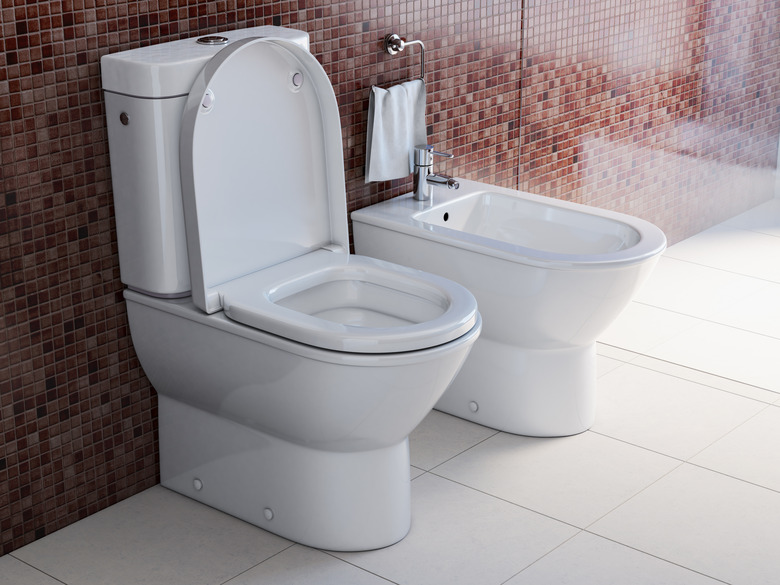How To Remove A Bidet
We may receive a commission on purchases made from links.
Bidets come in two main styles: standalone or freestanding bidets that look like a cross between a toilet and a sink, and bidets that attach directly to the back of your toilet seat. Removing a bidet typically represents a DIY project. However, if you want to remove a standalone bidet without replacing it, consider calling a professional plumber to close the drain lines.
Removing a Standalone Bidet
Removing a Standalone Bidet
First, locate the water supply lines behind the bidet and close the water valves by turning them to the right. Open the taps on the bidet to drain any remaining water from the lines. Locate the nut holding each flexible water supply line to the bidet. Use a pair of tongue-and-groove pliers to loosen these nuts until the water lines are completely disconnected from the bidet.
Next, look for bolts around the back or sides of the bidet that could be securing it to the floor. They may be covered with a cap. Remove the nuts and washers holding the bolts in place. If you find screws instead of bolts, use a screwdriver or drill to remove them completely.
According to the Home Depot, standalone bidets should be adhered to the floor using silicone sealant just like a toilet. You'll need to break this sealant by rocking the bidet back and forth. Finally, lift the bidet straight up and off the bolts. The porcelain basin may be heavy, so be sure to ask for assistance and use proper lifting techniques to avoid injury.
Disconnecting a Toilet-Mounted Bidet
Disconnecting a Toilet-Mounted Bidet
Some toilet-mounted bidets are simple attachments, whereas others completely replace your existing toilet seat. Be sure you have another toilet seat ready to install after removing this style of toilet-mounted bidet. Regardless of the exact style, the starting point for removing a bidet from your toilet is the same: Turn off the water leading to the bidet.
Cold-water bidets may connect to the same supply line as your toilet tank, whereas warm-water bidets like Tushy may connect under your sink. Follow the lines from the bidet to the water source to ensure you turn off the correct valve(s). Turn off the main water valve closest to the wall, not just the T-valve that diverts the water to the bidet. If the bidet was connected to the toilet tank supply valve, flush the toilet until there's no water remaining in the tank.
Then, use tongue-and-groove pliers to loosen the nuts securing each of the supply lines until they're completely disconnected from the T-valve. Unscrew the T-valve from the main water valve. Reconnect the toilet tank line or sink line to the main water valve. Don't forget to open the water valve again.
Removing a Toilet-Mounted Bidet
Removing a Toilet-Mounted Bidet
With the water lines disconnected from the bidet and reattached to the toilet or sink, all that's left to do is remove the bidet attachment itself. Because the attachment sits between the toilet bowl and the toilet seat, start by removing the toilet seat. Remove the bolt caps to reveal a screw head. If you can't get enough leverage to remove these screws with just a screwdriver, slide a wrench over the nut on the underside and push it in a clockwise direction while using the screwdriver in a counterclockwise direction to loosen the threads.
With the bolts removed, lift the toilet seat straight up. Your bidet attachment may rely on the toilet seat screws to hold it in place, which is the case with popular options like the Omigo. In this case, just lift the bidet to finish the removal process.
Otherwise, look for another set of screws. Remove these to completely free the bidet from the toilet. With the bidet out of the way, reattach your toilet seat.
